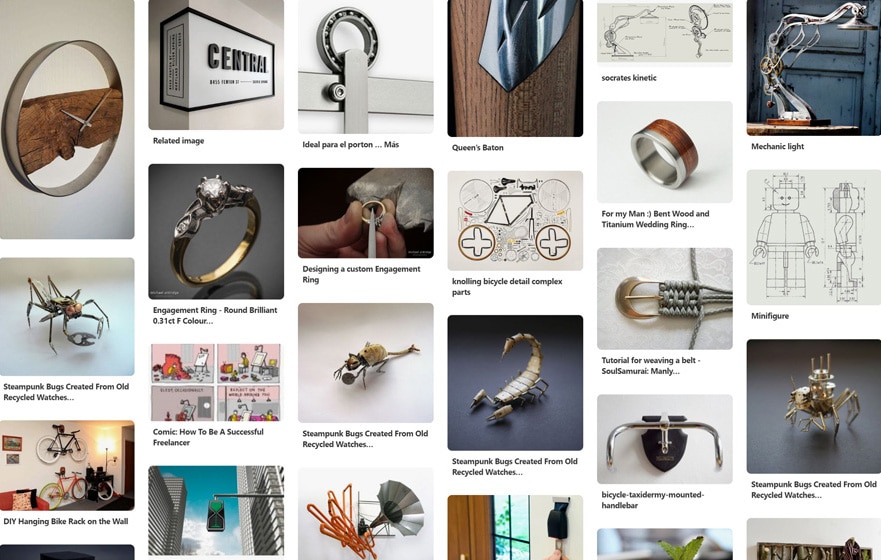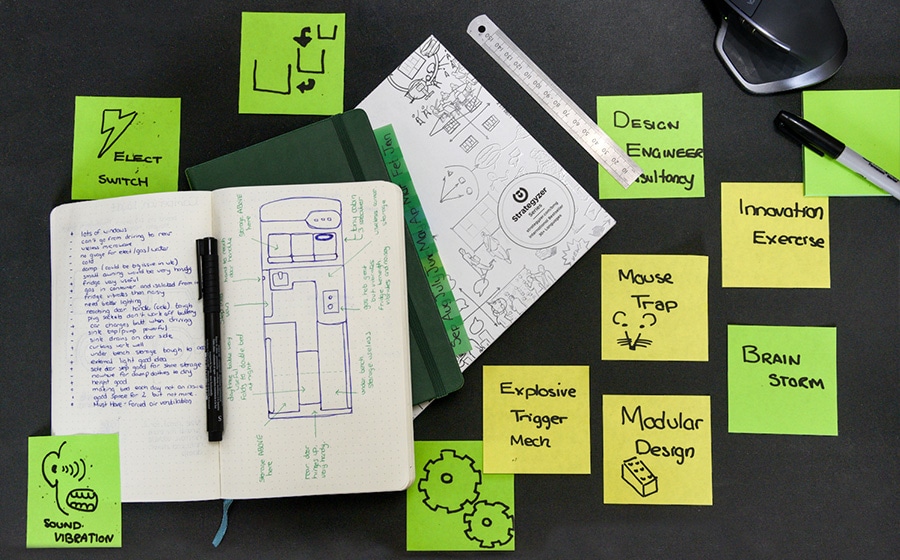
The MADE Approach
Product Design Consultancy in Glasgow – Each project is unique and begins with a thorough understanding of the challenges provided by the client. The problem can then be broken down into palatable stages. These are based upon the demands of the project and the customer’s needs. Our approach means that it is possible for us to take a product from conception to the shop shelves, or simply work with the client to solve a particularly challenging aspect of the design.
Together with clients, we have worked to develop designs that challenge the market. This includes a range of bestselling and highly awarded products as well as innovative intellectual property with successful patent applications.
Our Product Design Process
A project can include all or just some of the processes detailed below:

Define the Brief
The strongest products come from the strongest briefs. This means a thorough understanding of the problem, the market and the product goals.
Design is an involved process. To get the best from the process, a designer will work with you to ensure we have a complete and accurate design specification. This will come from listening to you (the client) as well as independent market research. This will allow the designer to tackle the project most effectively while scheduling periodic review meetings at key stages of the project. You, the client will be required to input your opinion and expertise for the process to move forward. The most valuable asset you can provide is your time.


Concept Development
The design process is very Darwinian; in that only the strongest ideas survive. During this phase your designer will generate many ideas; with a fail fast, learn quickly approach. Other products are looked at for inspiration and wild ideas are embraced in the hunt for the gold nugget of a concept. As this phase generates so many ideas, your designer will stick to quick sketches and very basic prototypes to quickly test the feasibility of each concept. We don’t want to invest too much time in a dud, instead, the best solutions are taken onward to the next phase.
Prototype and Testing
The winning concepts from the previous phase are refined. Each iteration sees the weaker concepts left behind and the strongest concepts developed with progressive detail. During this phase you will likely see modelling of the concepts with 3D CAD software and potentially prototyping and testing. At MADE, we believe that a hands-on approach to product development yields the quickest and best results.
Do you need to prototype? Prototyping is undoubtedly important. I’m sure you’d agree that it would be far more beneficial to make mistakes with a prototype rather than the final product. As good as your designer may be, there will always be scope for improvements and certain elements can’t be evaluated without a physical model.
The consultancy to manage prototyping and testing. Talk to your designer about these costs, they could be built into the initial quote or you could pay for them separately. The latter could be cheaper, but be braced for multiple prototypes.


Detailed Design
Once a winning concept has been selected, your designer will begin to invest heavily in design detail. This means refined testing of materials and shapes via either computer simulated modelling or hands-on prototype testing. A bill of materials (BOM) will be developed and finalised. We will also begin to seriously consider manufacture and potentially engage in conversations with your future manufacturing partner. The output from this phase will typically be a complete design and manufacturing data.
Design for Manufacture
and Assembly
This stage is dictated by the product and volume of production. If desired, the design consultancy can be on hand throughout this phase to work with manufacturers and distributors. To help bring your product to market through continuous design improvements, as required.
Given there are often changes requested from the manufacturer (no matter how well designed beforehand). We would strongly advise keeping the designer in the equation until the product is in production.
